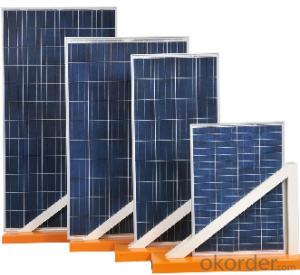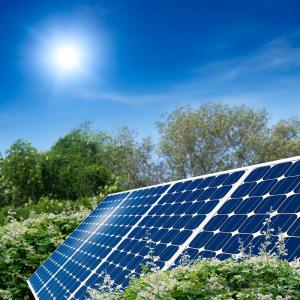Solar Panels Gilbert Az - Silicon Polycrystalline Solar Panel 245w
- Loading Port:
- Guangzhou
- Payment Terms:
- TT OR LC
- Min Order Qty:
- 200000 watt
- Supply Capability:
- 20000000 watt/month
OKorder Service Pledge
OKorder Financial Service
You Might Also Like
ABOUT US
We are a high-tech group wich specializes in solar products design,research, manufacture, sales,solar projects design and installation.
Our national sales service covers seven parts, including northeast, north, east, middle, south, northwest and southwest, international sales covers five continents and over forty countries, including Germany, Italy, Spain, France, America and Brazil etc.
We now provide Polycrystalline Silicon Solar Module;Thin Film Solar Module;Monocrystalline Silicon Solar Module
INTRODUCTION
This installation Manual contains essential information for the electrical and mechanical installation that your must know before installing CUSTOMER PV modules. This also contains safety information you need to be familiar with .All the information described in this manual are the intellectual property of CNBM and based on the technologies and experiences that have been acquired and accumulated in the long history of CUSTOMER. This document does not constitute a warranty, expressed or implied.
COMPONENTS

DATA SHEET
Maximum Power | 245W |
Efficiency | 0.151 |
Backsheet | Silver |
Frame Colar | White |
Manufacture Site | China |
Frame | Anodized Aluminum Alloy |
Weight | 19 kg |
TILT ANGLE
The title angle of the PV module is the measured between the PV module and a horizontal ground surface. The PV module generates the maximum output power when it faces the sun directly.
For the standalone systems with a battery where the PV modules are attached to a permanent structure , the tile angle of the PV modules should be determined to optimize the performance when the sunlight is the scarcest. In general, if the electric power generation is adequate when the sunlight is the scarcest, then the angle chosen should be adequate during the rest of the year. For grid-connected installations where the PV modules are attached to a permanent structure, it is recommended to tilt the PV module at the angle equal to the latitude of the installation site so that the power generation from the PV module will be optimum throughout the year.
- Q: Can the solar panels available be coated with a material (to improve it's looks) and not alter it's efficiency?
- No. The only coatings I am aware of are those that reduce reflection so more light gets through the protective surface to the actual cells. Anything thing that affects appearance is going to be reflecting light back to the viewer and the photons of that light are not available for electricity or heat. If the appearance of the panels offends you, then they need to be concealed by a fence of panels around them that do not throw shadows on the panels.
- Q: Can solar panels be installed on ski resorts?
- Yes, solar panels can be installed on ski resorts. In fact, many ski resorts have already started implementing solar energy systems to reduce their carbon footprint and lower their dependence on traditional energy sources. Solar panels can be mounted on rooftops, parking structures, or even on the ground near the resort area, providing clean and renewable energy to power various facilities and operations.
- Q: Can solar panels be installed on billboards?
- Yes, solar panels can be installed on billboards. In fact, it is becoming increasingly common to see billboards equipped with solar panels to harness solar energy and power their lighting systems. This not only reduces the environmental impact of billboard advertising but also helps in promoting renewable energy usage.
- Q: I recently got into solar panels, I have little background in electronics but I have done a little electrical work in the past and just want to make a small 36 cell panel to power a 2v battery that would run my a small tv (9 inch) and PS3 for a few hours every night. I have been looking up on how to do it before I get in over my head and I have a few questions.... After you solder all of the cells together then what? Do you hook all of the rows of cells together somehow? Can you connect them straight to a battery? After you hook to the battery do you hook up a power inverter to get the 2 AC plugs that would be needed? Thanks in advance for any help....
- You will have to wire them in such a way that provides the battery with the optimal voltage for it to charge, which on a car 2v battery is around 4v. You said you have some background in electronics so this shouldnt be too difficult. You can connect them straight to the battery yes. Like you said, I believe a power inverter from 2VDC to 0VAC would work just fine. PS3 pulls a lot lot lot of current though so it probably wouldnt last too long. Look up the specs for PS3 and see how many amps it is pulling and purchase your inverter based off of that. I remember trying to run an xbox in my car one time and the inverter I had didnt work because of that. Be careful working with batteries, I had one explode in my face about a month ago.. scariest moment of my life! Good luck!
- Q: Are solar panels suitable for residential use?
- Yes, solar panels are highly suitable for residential use. They are cost-effective, environmentally friendly, and can significantly reduce electricity bills. With advancements in technology and decreasing panel prices, solar panels have become an attractive option for homeowners to generate clean, renewable energy and contribute to a sustainable future.
- Q: Can solar panels be installed on historical landmarks?
- Yes, solar panels can be installed on historical landmarks. However, it requires careful planning and consideration to ensure that the installation does not compromise the historical integrity of the landmark. This may involve using discreet mounting systems or integrating solar panels into existing structures. Additionally, obtaining the necessary permits and approvals from relevant authorities is crucial before proceeding with the installation.
- Q: Our school is in the process of being built, but they have no plans to include any environmental benefits. I was wondering how to get a grant for solar panels (at least) or who I can talk to in order to get a grant.
- Excessively long payback schemes for solar panels are being quoted. It depends on where you live, where you situate your solar panels, what you buy and if you get a grant or install them yourself. Much of the cost of Solar panels is in the installation. Any competent DIY person can install a simple solar panel system. Ours cost less than ?000 to buy and self install. What are you calling payback time? Because each time I don't use fossil fuels and use solar energy instead, I don't get a 'fossil fuel' bill. Whilst we still use some electricity for running a fridge, lighting etc we have no other fuel bills, no gas, no oil, no electric heating no electrically heated hot water. We have woodburning stoves (which run on free wood) and solar. Remember you are not just paying for the electricity/gas/oil etc that you use, you are also paying standing charges, VAT etc. Include those in your 'payback time figures' and you will see a very different picture. How long would it take you to pay back ?,000 if you only had one tiny electric bill each quarter?
- Q: but is that per day, per hour or minute?How much watts does the average AC unit use?How much does an energy efficient lightbulb use?All in all let's hypothetically say we no longer use the electric company for our energy source, How many of these panels do you estimate it would take to supply our small home?
- The watt is a measure of instantaneous output that can also be used as an hourly measure. volt at amp for hour = watt but also a 00watt bulb requires a 00watt power source, regardless of how long it is on, the 00watts is used as an instantaneous term here. Aircon starts at about 000watts and the new energy efficient bulbs are about 7-5 watts. If you have an electric cooker, that might use 3000 watts, your computer about 500 (very variabke these days though, many are now much lower than this) Your biggest concern would be storage, solar only works when the sun shines so you need a bank of batteries to charge during the day and provide power on demand, they require proper managenemt to ensure ther are charged properly and in turn, an inverter will be required to produce the AC power your appliances will need. It all represents a huge investment with a long payback time and you would still probably need to top-up with a generator during winter, or become ahmish.
- Q: Well, I am looking for a cheap way on building a solar panel, instead of buying by the manufacturing stores. I would like to stay in the budget up to ,000 dollars. I want to have Solar Energy for my house because the sun is always shining. Is there a way I can make the Light power some of my house? What would I need? How much time would it take?Where can I get the items I need?
- there is a website that sells a book for $40 thattells you how to do it cheaply check it out just google earth4energy
- Q: name things someone could use solar panels for or make with solar panels? (use solar energy i mean?)
- Solar panels are primarily used to make electricity. What you choose to do with this power is up to you. New solar technology now looks to give the panels more than this one task. For example; - solar panels made into the shape of roof tiles can also be used for roofing. - thin film solar is being developed to add to cars and other mobile devices to provide portable DIY energy
Send your message to us
Solar Panels Gilbert Az - Silicon Polycrystalline Solar Panel 245w
- Loading Port:
- Guangzhou
- Payment Terms:
- TT OR LC
- Min Order Qty:
- 200000 watt
- Supply Capability:
- 20000000 watt/month
OKorder Service Pledge
OKorder Financial Service
Similar products
Hot products
Hot Searches
Related keywords



























